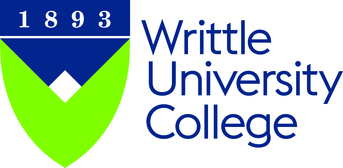Augmentation and repair of tendons using demineralised cortical bone.
Elnikety, Sherif, Pendegrass, Catherine J, Ferro de Godoy, Roberta, Holden, Charles and Blunn, Gordon W (2016) Augmentation and repair of tendons using demineralised cortical bone. BMC Musculoskeletal Disorders, 17 (1). p. 483. ISSN 1471-2474
|
Text
12891_2016_Article_1323.pdf - Published Version Available under License Creative Commons Attribution. Download (3MB) | Preview |
Abstract
BACKGROUND In severe injuries with loss of tendon substance a tendon graft or a synthetic substitute is usually used to restore functional length. This is usually associated with donor site morbidity, host tissue reactions and lack of remodelling of the synthetic substitutes, which may result in suboptimal outcome. A biocompatible graft with mechanical and structural properties that replicate those of normal tendon and ligament has so far not been identified. The use of demineralised bone for tendon reattachment onto bone has been shown to be effective in promoting the regeneration of a normal enthesis. Because of its properties, we proposed that Demineralised Cortical Bone (DCB) could be used in repair of a large tendon defect. METHODS Allogenic DCB grafts in strip form were prepared from sheep cortical bone by acid decalcification and used to replace the enthesis and distal 1 cm of the ovine patellar tendon adjacent to the tibial tuberosity. In 6 animals the DCB strip was used to bridge the gap between the resected end of the tendon and was attached with bone anchors. Force plate analysis was done for each animal preoperatively and at weeks 3, 9, and 12 post operatively. At week 12, after euthanasia x-rays were taken and range of movements were recorded for hind limbs of each animal. Patella, patellar tendon - DCB and proximal tibia were harvested as a block and pQCT scan was done prior to histological analysis. RESULTS Over time functional weight bearing significantly increased from 44% at 3 weeks post surgery to 79% at week 12. On retrieval none of the specimens showed any evidence of ossification of the DCB. Histological analysis proved formation of neo-enthesis with presence of fibrocartilage and mineralised fibrocartilage in all the specimens. DCB grafts contained host cells and showed evidence of vascularisation. Remodelling of the collagen leading to ligamentisation of the DCB was proved by the presence of crimp in the DCB graft on polarized microscopy. CONCLUSION Combined with the appropriate surgical techniques, DCB can be used to achieve early mobilization and regeneration of a tendon defect which may be applicable to the repair of chronic rotator cuff injury in humans.
| Item Type: | Article |
|---|---|
| Keywords: | Tendon Ligament Demineralised bone Scaffold Tissue engineering |
| Divisions: | Equine & Veterinary Physiotherapy |
| Depositing User: | Dr Roberta Blake |
| Date Deposited: | 22 Nov 2020 18:23 |
| Last Modified: | 10 Nov 2023 11:49 |
| URI: | https://writtle.repository.guildhe.ac.uk/id/eprint/15195 |
Actions (login required)
 |
Edit Item |

